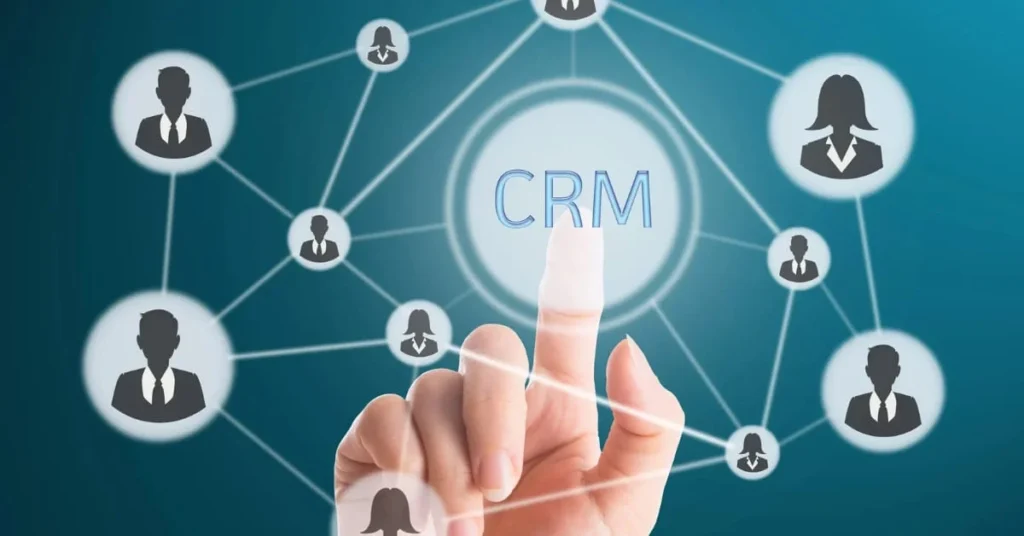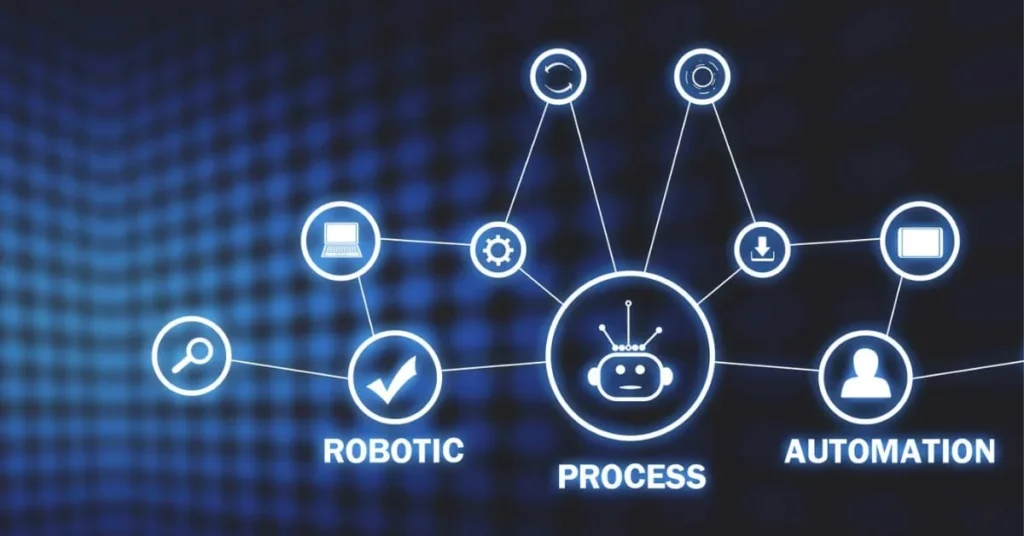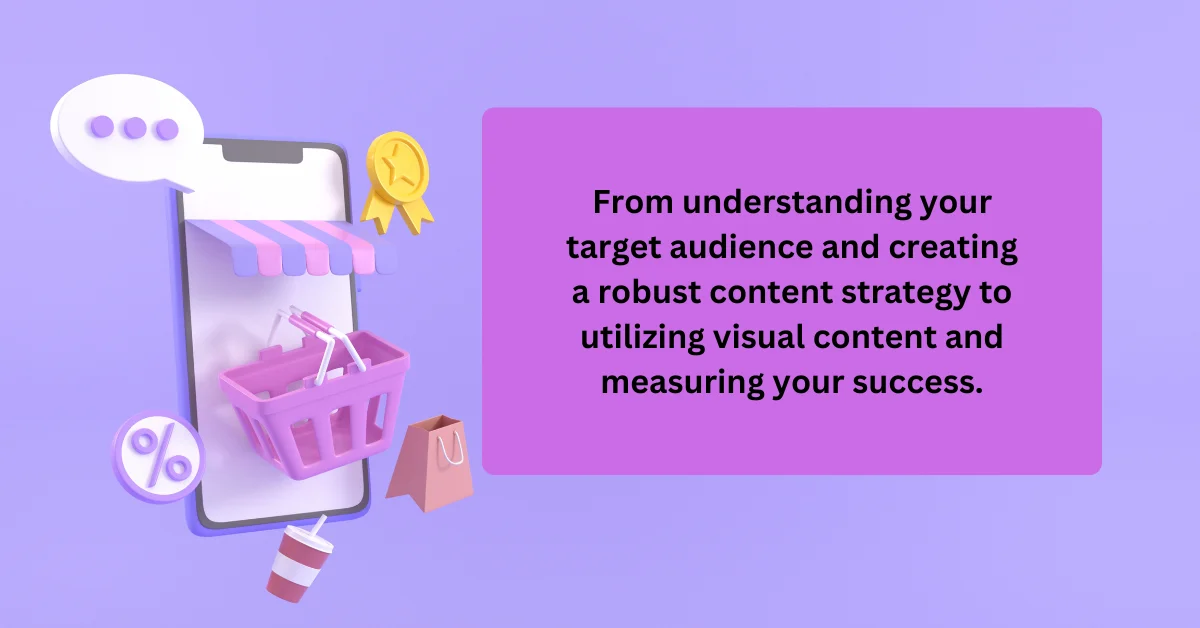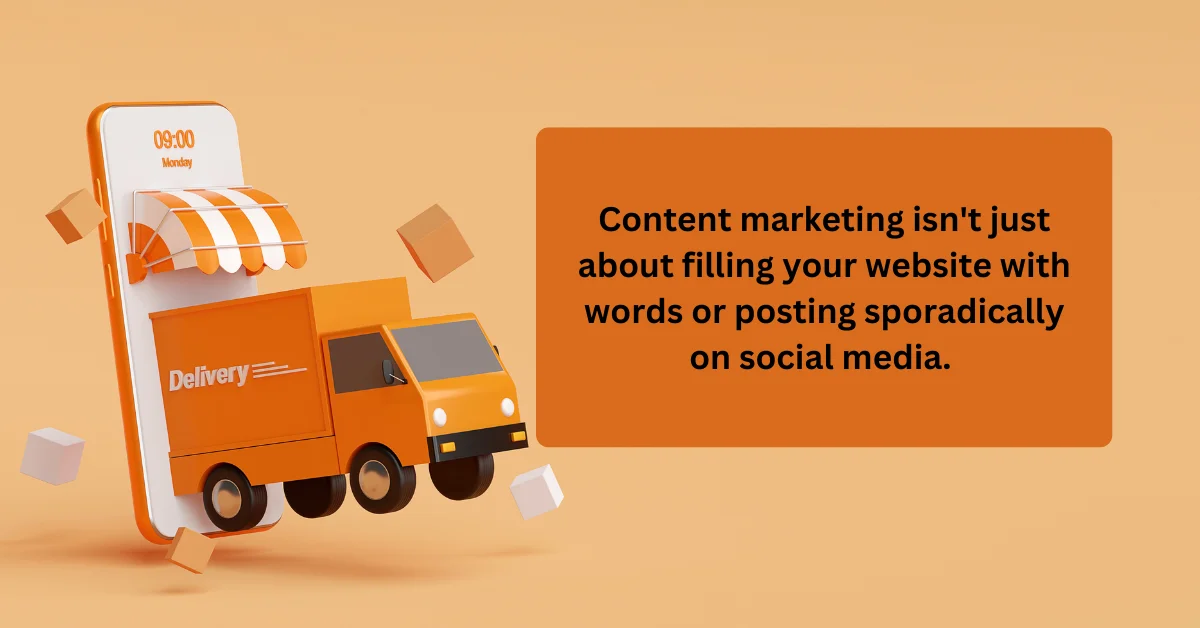In today’s fast-paced digital world, e-commerce businesses are constantly seeking ways to streamline their marketing efforts and stay ahead of the competition. E-commerce marketing automation has emerged as a game-changer, offering businesses the tools and techniques needed to automate repetitive tasks, optimize marketing strategies, and ultimately boost sales. By leveraging automation, online retailers can focus more on creative strategies and less on time-consuming manual processes.
But what exactly is e-commerce marketing automation, and how can it benefit your business? At its core, marketing automation refers to the use of software and technology to automate various marketing activities across different channels. This can range from sending personalized emails to customers based on their behavior to automating social media posts to engage followers consistently. The benefits of adopting marketing automation are substantial: it saves time, enhances efficiency, and creates a more personalized shopping experience for your customers.
In this comprehensive guide, we will explore the ins and outs of e-commerce marketing automation. We’ll cover everything from understanding the basics and choosing the right tools, to implementing these tools effectively and optimizing your automated workflows. By the end of this guide, you’ll have a clear roadmap to automate your e-commerce marketing efforts and drive growth for your online store.
Are you ready to transform your marketing strategy and take your e-commerce business to new heights? Let’s dive in!
Understanding E-commerce Marketing Automation
E-commerce marketing automation is more than just a buzzword—it’s a strategic approach that allows businesses to optimize their marketing efforts by leveraging technology to handle routine and repetitive tasks. But what does this really mean for your online store?

Definition and Scope
At its core, e-commerce marketing automation involves using specialized software to automate various marketing activities that are crucial for driving customer engagement and sales. This could include sending out automated email campaigns, scheduling social media posts, managing customer data, and even personalizing product recommendations based on customer behavior. By automating these processes, businesses can not only save time and reduce manual effort but also ensure a more consistent and personalized experience for their customers.
Common Automation Tasks in E-commerce
There are several key areas where e-commerce businesses can benefit from automation:
- Email Marketing: Automatically sending targeted emails based on customer actions, such as welcome emails, order confirmations, and abandoned cart reminders.
- Social Media Management: Scheduling posts across different social media platforms to maintain a consistent presence and engage with followers.
- Customer Segmentation: Using data to segment customers into different groups based on their behavior, preferences, and purchase history, allowing for more personalized marketing.
- Product Recommendations: Automating product suggestions based on a customer’s browsing or purchasing history, enhancing their shopping experience and boosting sales.
- Abandoned Cart Recovery: Sending automated reminders to customers who have added items to their cart but haven’t completed the purchase, helping recover potentially lost sales.
Why Automate?
So, why should e-commerce businesses embrace marketing automation? The reasons are compelling:
- Efficiency: Automation takes over repetitive tasks that would otherwise consume a significant amount of time and resources. This allows your team to focus on more strategic activities that can drive growth.
- Personalization: Automated tools can help you deliver a more personalized experience to your customers by leveraging data to tailor messages and offers to individual preferences.
- Scalability: As your business grows, the demands on your marketing efforts will also increase. Automation allows you to scale your marketing operations without a proportional increase in workload.
- Consistency: Maintaining a consistent brand presence across various channels can be challenging, especially as you scale. Automation ensures that your messaging remains uniform and timely, regardless of the platform or customer segment.
By understanding the scope and benefits of e-commerce marketing automation, you can begin to see how these tools and strategies can transform your marketing efforts, making them more efficient, personalized, and scalable.
Essential Tools for E-commerce Marketing Automation
Choosing the right tools is crucial when it comes to automating your e-commerce marketing. The effectiveness of your automation strategy depends heavily on the software and platforms you use, as these will dictate how well you can execute and scale your marketing efforts. Here’s a breakdown of the essential tools that can help you automate various aspects of your e-commerce business:
Email Marketing Automation Tools
Email marketing remains one of the most effective channels for reaching and engaging customers. Automation tools in this space allow businesses to send personalized emails at scale, triggered by specific customer actions or behaviors.
- Mailchimp: Known for its user-friendly interface and robust automation features, Mailchimp allows you to create automated email campaigns based on customer behavior, preferences, and past interactions. It’s an excellent choice for businesses looking to automate email sequences like welcome emails, cart abandonment reminders, and post-purchase follow-ups.
- Klaviyo: This tool is designed specifically for e-commerce businesses and integrates seamlessly with platforms like Shopify and WooCommerce. Klaviyo enables highly personalized email marketing through advanced segmentation and automation features, allowing you to target customers with precision.
- ActiveCampaign: Beyond email, Active Campaign offers a comprehensive suite of automation tools that includes CRM functionalities and SMS marketing. Its powerful automation workflows can help you engage customers across multiple channels, enhancing their overall shopping experience.
Customer Relationship Management (CRM) Systems

A CRM system is essential for managing customer data and interactions, allowing you to automate communications and improve customer relationships.
- HubSpot: HubSpot’s CRM platform provides a full suite of tools for sales, marketing, and customer service. Its automation features allow you to streamline processes such as lead scoring, follow-up emails, and customer segmentation, ensuring that you engage with customers at the right time with the right message.
- Salesforce: A leader in the CRM space, Salesforce offers a highly customizable platform that can scale with your business. Its marketing automation capabilities enable businesses to automate tasks like lead management, email marketing, and social media engagement, all while maintaining a detailed view of each customer interaction.
Social Media Automation Tools
Social media is a critical channel for e-commerce businesses, but managing multiple platforms can be time-consuming. Automation tools can help streamline this process, ensuring consistent and timely posting.
- Hootsuite: Hootsuite is one of the most popular social media management tools, allowing you to schedule posts, track engagement, and manage multiple social media accounts from one dashboard. Its automation features help maintain a steady flow of content, freeing up time for strategy and engagement.
- Buffer: Buffer is another excellent tool for scheduling social media posts and analyzing performance. Its simple interface makes it easy to set up automated posting schedules, ensuring your social media presence remains active even when you’re not online.
Other Automation Tools
Aside from email, CRM, and social media, there are other automation tools that can further enhance your e-commerce operations:
- Zapier: Zapier connects different apps and automates workflows, making it easier to integrate various tools and platforms. For example, you can set up automated workflows that sync customer data from your e-commerce platform to your CRM, or trigger emails based on specific customer actions.
- Zendesk: For customer support automation, Zendesk provides tools to automate responses to common queries, manage tickets, and provide self-service options. This not only improves response times but also enhances customer satisfaction.
By leveraging these tools, you can automate various aspects of your e-commerce marketing strategy, allowing you to focus more on creative and strategic initiatives that drive growth.
How to Choose the Right Automation Tools for Your E-commerce Business
Selecting the right automation tools for your e-commerce business is a critical step toward maximizing the efficiency and effectiveness of your marketing efforts. With countless tools available, it’s essential to find ones that align with your specific needs and objectives. Here’s a step-by-step guide to help you choose the best automation tools for your business:

Assessing Your Needs
Before you start exploring different automation tools, it’s important to have a clear understanding of your business needs and goals. Consider the following questions:
- What are your primary marketing objectives? Are you looking to increase sales, improve customer retention, or boost engagement on social media?
- Which tasks are currently consuming the most time? Identifying these will help you understand where automation can have the most significant impact.
- What is the size of your business? The needs of a small e-commerce store will differ from those of a large enterprise. Make sure the tools you choose are suitable for your business size and scale.
By answering these questions, you can narrow down your options and focus on tools that will provide the most value for your business.
Budget Considerations
While automation can offer a strong return on investment, it’s important to consider your budget when choosing tools. Here are some tips for managing costs effectively:
- Compare Pricing Models: Some tools offer flat-rate pricing, while others charge based on usage or the number of contacts. Compare different pricing models to find one that fits your budget.
- Look for Free Trials or Demos: Many automation tools offer free trials or demos, allowing you to test their features before committing. This can help you determine if a tool meets your needs without incurring upfront costs.
- Consider the Long-Term ROI: While some tools may seem expensive initially, they could provide significant cost savings over time by reducing manual work and improving marketing efficiency.
Ease of Integration
A key factor to consider when selecting automation tools is how well they integrate with your existing platforms and workflows. Seamless integration can save you time and reduce the risk of data silos or duplicate efforts.
- Check Compatibility with Your E-commerce Platform: Make sure the automation tools you’re considering integrate smoothly with your e-commerce platform, whether it’s Shopify, WooCommerce, Magento, or another solution.
- Evaluate API and Third-Party Integrations: Tools with robust API support and a wide range of third-party integrations can offer greater flexibility and customization. This allows you to create automated workflows that suit your specific needs.
Scalability and Support
As your business grows, your automation needs will likely evolve. Choosing tools that can scale with your business is crucial to ensure long-term success.
- Assess Scalability: Look for tools that can handle an increasing volume of data and users without sacrificing performance. This is especially important for businesses that anticipate rapid growth.
- Evaluate Customer Support: Strong customer support is essential for troubleshooting issues and maximizing the value of your automation tools. Check if the tool providers offer comprehensive support, including live chat, phone support, and a knowledge base.
By carefully considering your needs, budget, integration capabilities, scalability, and support options, you can select the best automation tools for your e-commerce business. This strategic approach will help you build a solid foundation for automating your marketing efforts, driving growth, and improving efficiency.
Step-by-Step Guide to Implementing Marketing Automation
Implementing marketing automation in your e-commerce business can seem daunting, but with a structured approach, you can set up your systems effectively and start reaping the benefits quickly. Here’s a step-by-step guide to help you implement marketing automation in a way that aligns with your business goals and enhances your marketing efforts:

Step 1: Identify Repetitive Tasks
The first step in implementing marketing automation is to identify the tasks that are repetitive and time-consuming but crucial for your marketing strategy. Automation is most beneficial when applied to tasks that require consistency but not necessarily manual intervention. Here are some common areas to consider:
- Email Campaigns: Sending welcome emails, follow-up messages, and cart abandonment reminders.
- Social Media Posting: Scheduling posts across various platforms to maintain a consistent presence.
- Customer Segmentation: Automatically segmenting customers based on their behavior, purchase history, or engagement levels.
- Product Recommendations: Automating the delivery of personalized product suggestions based on browsing or purchase history.
By pinpointing these tasks, you can clearly define what you need from your automation tools and prioritize your implementation efforts accordingly.
Step 2: Set Clear Goals and KPIs
Before diving into the automation process, it’s essential to set clear goals and key performance indicators (KPIs). Defining what success looks like will help you measure the effectiveness of your automation efforts and make necessary adjustments.
- Define Your Objectives: Whether your goal is to increase sales, improve customer retention, or boost engagement, having a clear objective will guide your automation strategy.
- Establish KPIs: Determine the metrics that will help you track your progress. For example, if you’re automating email campaigns, you might track metrics like open rates, click-through rates, and conversion rates.
Having well-defined goals and KPIs ensures that your automation efforts are aligned with your overall business strategy and provides a benchmark for measuring success.
Step 3: Choose and Implement Tools
With your goals and tasks clearly defined, the next step is to select the appropriate automation tools that meet your business needs. Refer to the section on Essential Tools for E-commerce Marketing Automation to choose the best tools for your specific requirements.
- Select Your Tools: Choose tools that align with your needs, budget, and existing systems. Look for features that are essential for your automation tasks, such as email sequencing, social media scheduling, or CRM integration.
- Integrate and Configure: Once you’ve selected your tools, integrate them with your e-commerce platform and other relevant systems. Configure the settings to match your automation goals, such as setting up email templates, creating customer segments, or scheduling social media posts.
Carefully testing the tools during the implementation phase will help you identify any issues early on and ensure everything runs smoothly from the start.
Step 4: Monitor and Optimize
After implementing your automation tools, it’s crucial to monitor their performance regularly and optimize them based on the data you gather. Automation isn’t a set-it-and-forget-it solution; continuous optimization is key to maximizing its benefits.
- Monitor Performance: Use your KPIs to track the effectiveness of your automated campaigns and workflows. Pay attention to metrics such as email open rates, social media engagement, and sales conversions.
- Analyze and Adjust: Based on the data collected, identify areas where your automation could be improved. For example, if your email open rates are lower than expected, you might test different subject lines or send times.
- A/B Testing: Continuously test different versions of your automated campaigns to see which performs better. This could include testing different email content, call-to-action buttons, or product recommendations.
By regularly monitoring and optimizing your automation efforts, you can ensure that they continue to deliver value and drive growth for your e-commerce business.
Best Practices for E-commerce Marketing Automation
To maximize the benefits of e-commerce marketing automation, it’s essential to follow best practices that ensure your automated processes are effective, engaging, and customer-centric. Here are some key strategies to help you make the most of your automation efforts:

Personalization
Personalization is a powerful tool in marketing automation. By delivering personalized content and experiences, you can build stronger relationships with your customers and drive more sales. Here’s how to incorporate personalization into your automation strategy:
- Use Customer Data: Leverage data such as purchase history, browsing behavior, and demographic information to tailor your marketing messages. For example, if a customer frequently purchases running shoes, you can send them personalized emails featuring new running gear or accessories.
- Dynamic Content: Implement dynamic content in your emails and website to display different messages or offers based on the customer’s profile or behavior. This makes the experience more relevant and engaging for each individual customer.
- Behavioral Triggers: Set up automated workflows that are triggered by specific customer actions, such as abandoning a cart, browsing a particular product category, or making a purchase. These triggers allow you to send timely and relevant messages that can encourage conversions.
Testing and Iteration
Continuous testing and iteration are crucial to optimizing your automated marketing efforts. Here’s how to ensure your campaigns are always performing at their best:
- A/B Testing: Regularly conduct A/B tests on different elements of your automated campaigns, such as subject lines, email content, images, and call-to-action buttons. This will help you identify what resonates most with your audience and refine your strategies accordingly.
- Analyze Results: Review the performance data from your automated campaigns to understand what’s working and what’s not. Use this data to make informed decisions about adjustments and improvements.
- Iterate Based on Feedback: Pay attention to customer feedback and adjust your automated messages and workflows accordingly. If customers respond positively to certain types of content or offers, consider incorporating more of those elements into your automation strategy.
Data Privacy and Compliance
With increasing concerns about data privacy, it’s essential to ensure that your marketing automation efforts comply with all relevant regulations and protect your customers’ information:
- Adhere to Regulations: Familiarize yourself with data protection regulations such as the General Data Protection Regulation (GDPR) and the California Consumer Privacy Act (CCPA). Ensure your automated marketing activities comply with these laws, including obtaining consent for data collection and providing options for customers to opt-out.
- Secure Data Handling: Implement robust security measures to protect customer data and prevent unauthorized access. This includes using encryption, regular security audits, and following best practices for data storage and handling.
- Transparency: Be transparent about how you collect, use, and store customer data. Clearly communicate your privacy policies and provide easy access for customers to review and manage their data preferences.
Avoiding Over-Automation
While automation can significantly enhance your marketing efforts, it’s important to avoid over-automation, which can lead to a lack of personalization and make your communications feel impersonal or robotic:
- Maintain a Human Touch: Balance automation with personalized, human interactions. For example, use automated emails to engage customers, but ensure there are opportunities for them to reach out and communicate with a real person if needed.
- Customize Messaging: Avoid sending generic, one-size-fits-all messages. Use segmentation and personalization to ensure your automated communications are relevant and valuable to each customer.
- Monitor Frequency: Be mindful of the frequency of your automated messages. Bombarding customers with too many emails or notifications can lead to unsubscribes and a negative brand perception. Test different frequencies to find the right balance for your audience.
By following these best practices, you can leverage e-commerce marketing automation to enhance your customer relationships, optimize your marketing efforts, and drive growth for your business.
Conclusion
E-commerce marketing automation offers a wealth of opportunities for businesses to streamline their marketing efforts, improve customer engagement, and drive growth. By leveraging the right tools and strategies, you can automate repetitive tasks, personalize customer experiences, and ensure consistent messaging across multiple channels.
In this guide, we’ve covered the essentials of e-commerce marketing automation, from understanding its scope and benefits to choosing the right tools and implementing them effectively. We’ve also shared best practices to help you optimize your automation efforts and avoid common pitfalls.
As you embark on your journey to automate your e-commerce marketing, remember that automation is not a one-size-fits-all solution. It requires careful planning, continuous optimization, and a commitment to delivering value to your customers. With the right approach, you can transform your marketing strategy, save time, and achieve better results for your business.
Now is the perfect time to start automating your e-commerce marketing. Whether you’re looking to increase sales, improve customer retention, or simply free up more time for strategic initiatives, marketing automation can help you achieve your goals and take your online store to the next level.
For those who are looking to take thier e-commerce marketing to next level, consider partnering with professionals who specialize in e-commerce marketing automation. A little expert advice can go a long way in refining your approach and achieving even better results.














